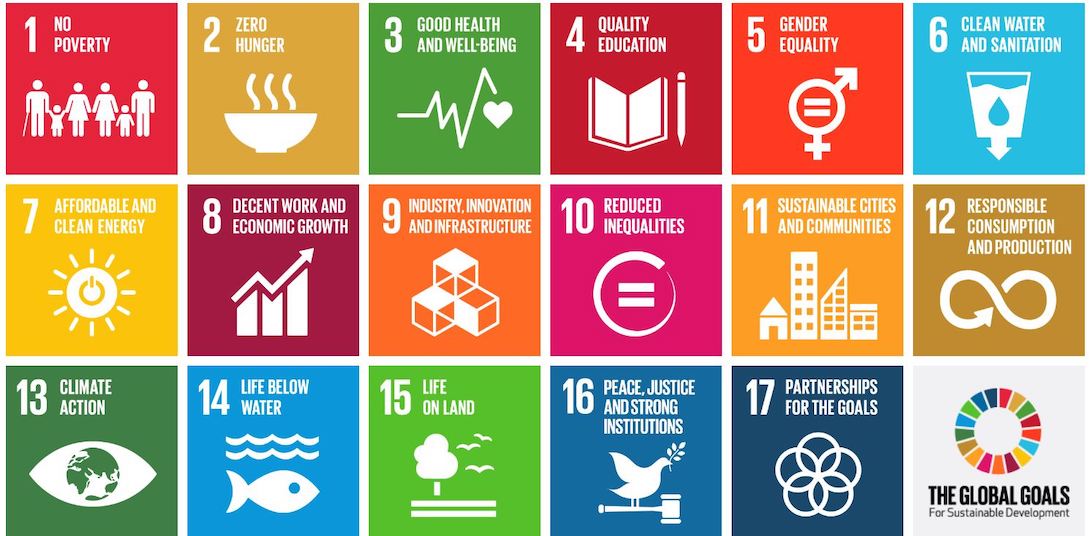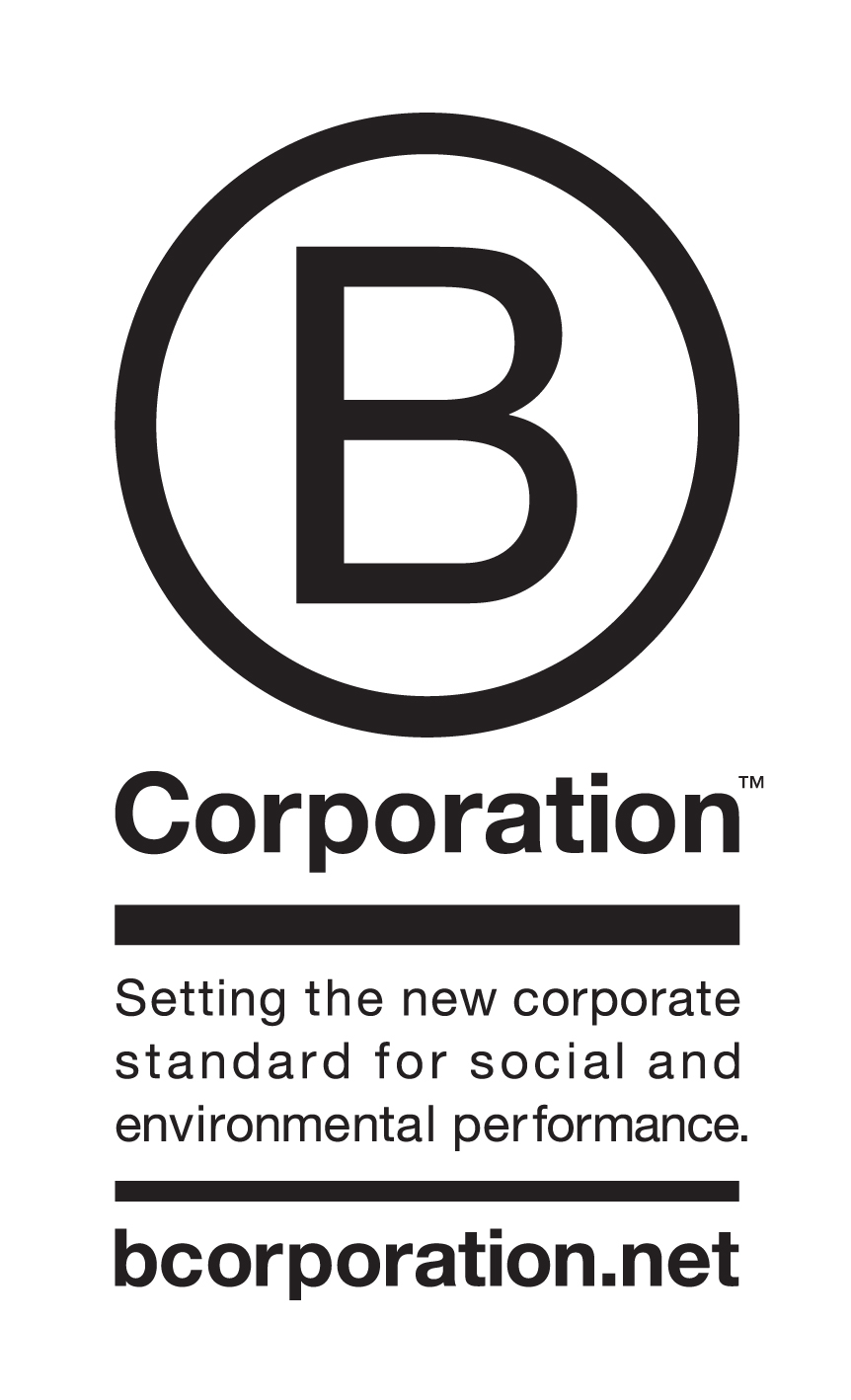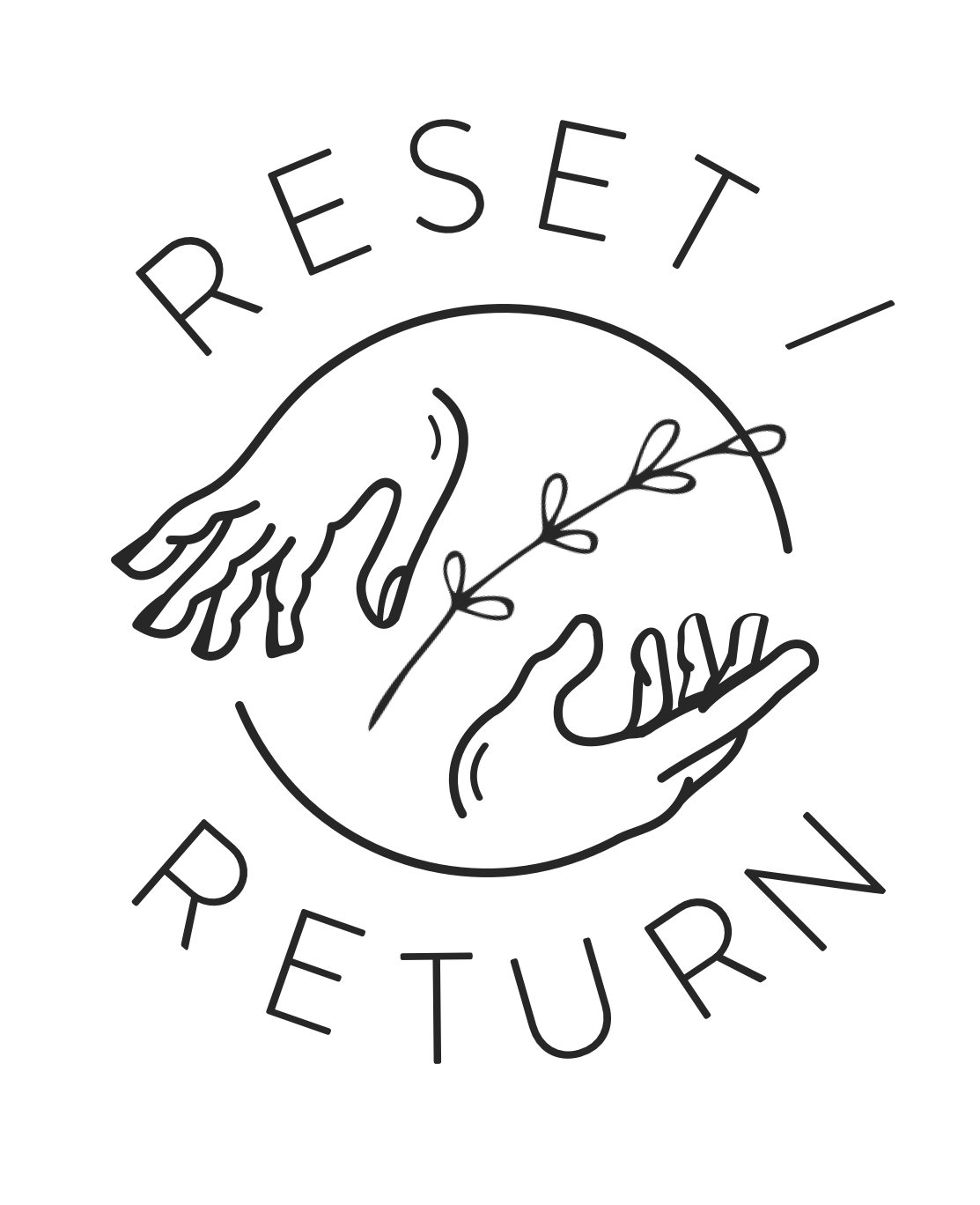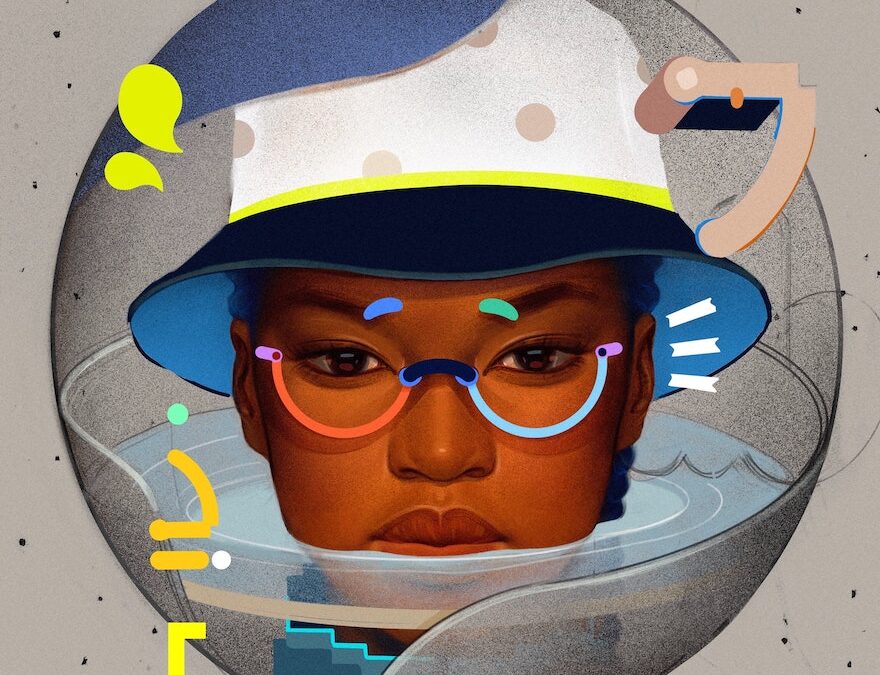There are millions of people working to stop the overuse and misallocation of the planet’s resources… but who are they? And how are they doing it?
You don’t have to search Google til your blueblockers break. In fact, a comprehensive overview of sustainability and social impact takes 5 minutes skimming this article.
Here are the 15 main points of Saving the World 101: the initiatives, progress, and current issues you need to know.
1
The Sustainable Development Goals: 17 goals with 200+ targets, each to be accomplished by 2030.
Set in 2015 at a United Nations summit in New York, The SDG’s prioritize areas of need across environmental, civic and social sectors.
Most people don’t know that the colorful 17 tiles image was created later as a marketing campaign to make the SDG’s more accessible – it was not intended to be used as a “pick your goal” chart. The goals are interconnected, and companies who get involved can display any that relate to their impact measures.
This mini-documentary came out in 2020 as an update and a vision for the world that’s possible in 2030.

2
The Paris Agreement
For the first time in history, 196 parties across the world came into a legally binding treaty on climate change. The agreement was set just months after the SDG’s were created in 2015, and came into full effect in 2016. As of US President Joe Biden’s first week in office, America has just rejoined the Paris agreement and publicly acknowledged that climate change is factual and urgent.
In it, countries commit to cutting their carbon emissions output to limit the global temperature increase to 2º Celsius, with a goal of reducing the global temperature to 1.5º Celsius – back to the average temperature before industrialization.
3
Public Benefit Corporations and the 4th Sector
This is not the same thing as the B Corp Certification. PBCs are the legal way to incorporate as a business with a triple-bottom line (profit + people + planet).
Maryland legalized the use of the PBC in 2010, and since then they’re viable in 30 states. The 4th sector refers to a new part of the economy that opened up when PBC’s emerged. Here are the 4 sectors of the economy:

Graphic from epochpi.com
- Government
- Nonprofit and NGO
- Business
- Public Benefit Corporations
PBC’s are a new sector that blends the goals of a nonprofit with the tax and efficiency of a business. The start of impact business was in this innovation.
4
The B Corp Certification
You’ll see the B Corp circled B logo on hundreds of products you know, like Silk nut milk, Patagonia clothing, and Ben & Jerry’s ice cream.
“To date, our community includes over 3,500 B Corps in 70 countries and 150 industries, and over 100,000 companies manage their impact with the B Impact Assessment and the SDG Action Manager.”

The certification includes a rigorous assessment and annual reporting to maintain each certification. The B Impact Assessment can be used as an education tool and checklist to grow into a certifiable company, with categories across every area of the business. Once a company becomes certified, they are listed in the B Corp Directory and invited to the B Economy network led by B Lab, an influence and thought-leadership group aiming to transform business on the whole.
Top Environmental Stressors
5
Fossil Fuels: 65% of global emissions.
Obviously, the oil and coal we use for industry takes carbon out of the earth and ultimately exhausts it into the atmosphere. Oil production in particular is the source of our dependence on plastic, since oil refinement waste is the main ingredient in plastic production. We certainly need to figure out how to dispose of our plastic and use it less… but stopping all oil refinement would cut off plastic at the source.

6
Food Systems: 16+% of global emissions.
Mass meat production creates 16% of the world’s carbon emissions through methane and uses incredible resources. Where herds used to fertilize, aerate, and enrich the land and soil, now livestock over grazes and exhausts soil – and relies on single-crop corn for feed.
This complex “wicked” problem is multiplied with farming that depletes the soil of its ability to trap methane or carbon emissions. Single crop farming, or monoculture, turns once lush forests into deserts. With livestock creating mass amounts of carbon emissions and billions of humans who do not put their natural waste back into balanced soil (hello, composting!)… Nature’s ability to replenish emissions is decreasing exponentially.
Generating three centimeters of arable dirt takes 1,000 years, and at the current rate of depletion… all of the world’s top soil could be gone within 60 years, according to a senior UN official.
7
Forestry & Unconserved Land: 11% of global emissions
A 2019 study estimated that we would need to legally conserve 30% of the planet’s landmass by 2050 to counteract the depletion in this category. This category also lends to the rapid decrease of wildlife and extinctions, all of which 400 of the worlds leading experts recently assessed in their Global Assessment of the State of Nature.
8
Earth Overshoot Day
In 2020, we used 1 planet’s worth of natural resources for the year on August 22nd. Currently, we use 1.6 planet’s worth of resources each year. These figures started the Earth Overshoot Day campaign with the #MoveTheDate hashtag, to put a more tangible goal to our efforts to reduce emissions and consumption.
Top Environmental Opportunities (The Good News!)
Addressing climate change happens in 2 parts: restoring what we’ve depleted, and finding ways to use resources at the same rate that they replenish.9
Replenishing Carbon Sinks
A carbon sink is any natural environment that traps carbon dioxide. Soil, plants, and oceans all store carbon dioxide, so the more we replenish them, the more they can restore the makeup and temperature of our atmosphere. Here are a few inspiring and informative projects on this front:
Regenerative Agriculture: This is a style of agriculture that restores soil and encourages natural ecosystems. Patagonia’s mini-documentary Unbroken Ground shows four areas of agriculture that can change to make soil and oceans healthy carbon-trapping resources again.
Reforestation: One study showed that reforesting an area the size of the United States could reduce human carbon emissions by a third. Plus, there are so many sweet initiatives and innovations available to replant trees, like this sweet banking option that plants trees with every purchase you make.
10
Sustainable Countries and Cities
- Circular Economies: moving from a linear economic model, “Take > Make > Waste” to a circular model, which is purposefully designed to use recyclable, regenerative materials and reduce waste. In July 2020, the UK announced their commitment to move towards a circular economic model that generates £75 billion and creates half a million jobs.
- Laws for carbon neutral (or positive) buildings: countries all over the world are starting to set dates by which building construction must be carbon neutral. For example, Amsterdam’s goal for 2050 states: “We want to make the entire built environment carbon–neutral by 2050 and natural gas-free by 2040. By 2050, all buildings in the city will use sustainable heating.”
- Currently, Nine countries have instituted carbon-neutrality goals by law. Sweden takes the lead for the earliest, promising 2045, with the rest promising 2050. China – the largest emitting country in the world – recently announced its goal to be carbon neutral by 2060.
Patrick Perkins for Unsplash
11
Sustainable Innovation
This is the most hopeful part: innovation. Iphones and tesla cars don’t have to be the only cutting-edge technology… with so many creative minds at work on sustainability, living with the planet seems more and more possible.
- Experimental cities: These are small-to-medium sized towns that have seen an influx of entrepreneurs and innovators and have found governmental support to try new ways of building, growing, generating energy, and living. Rotterdam is the leader in these experiments, with innovations in floating parks, stormwater storage, and glass-surrounded greenhouse homes.
“Real innovation will happen not in an app, but in the physical world, on a city scale,” says Rotterdam-based designer Daan Roosegaarde, known for building projects such as a smog-eating tower, solar-powered roads, and a bicycle path that glows in the dark. “How can you make places which are smarter, more sustainable, more energy friendly, more social, more inclusive?” Excerpt from an article by Adele Peters for FastCompany
- Alternative plastics, like plastics made with algae, plant matter, and discarded egg and nut shells.
- Innovating waste, with plastic eating bacteria and algae, and the enormous push in the fashion industry to stop making new fabrics or using unsustainably sourced materials.
- Food sourcing innovation – cricket protein, cellular agriculture, seagrass rice in Michelin-star restaurants, and at the simplest level – personally opting for foods that use less resources to produce (or growing your own)! My personal favorite is a seaweed that cows can eat to keep them from burping methane so much.
Rotterdam, Netherlands | Jurriaan Snikkers for Unsplash 👇
Top Social Stressors
Though it’s much more challenging to name root issues in the social sector, we can easily see that our use of the planet’s resources doesn’t match up with the number of people in extreme poverty.12
Core issues: Education and Fair Labor
Hunger, poverty, and disease are the symptoms of unequal distribution of resources. But what is the cause? Based on my own research, here is a birds-eye-view:
- The rapid increase in technology hasn’t fully appeared in education around the world, which creates huge systemic gaps.
- In the United States, school systems based on industrial-age content turn out uncreative workers with few applicable skills.
- In 2nd and 3rd world countries, the lack of access to skills education keeps many people in jobs with unfair working conditions and wages.
- The first world (especially western) attachment to convenience keeps fossil fuels working, cheap goods in production with unfair labor, and incredible waste of food and goods.
- This convenience focus lessens the market for local goods and alienates poorer communities from market opportunities.
- On top of that, the lack of access to healthcare and health education in poorer communities leads to dependence on unhealthy cheap food products, dependence on single-use products and plastics, and little family planning. This looks like more family members home with more children who cannot be supported by one person’s wage.
13
Climate Refugees
As warmer global temps cause shorelines and rains to change, thousands of people will be displaced from their homes. Natural disaster costs were already higher in the 2010’s that ever before, and the infrastructure to manage millions of refugees will stress resources and cascade all kinds of social and infrastructure issues.
Top Social Opportunities
Since societal needs are such complex problems, it is largely opinion to say that certain levers will address all social issues more than others. Based on my research, the biggest opportunities have been in technology that makes education, banking, commerce, and wellbeing services available to more people. Here are a few fascinating examples:14
Social-Good Tech & Marketplaces
- M-Pesa Mobile Money making business transactions possible in rural 3rd-world areas.
- DoctHers makes medical care available for Pakistanis who can’t get to a doctor, and employs female doctors who would have otherwise had to stop practicing after marriage.
- Apps and tools like GoodGuide, Avoid Plugin, and Good on You help you compare the practices and sustainability of products and brands.
- Hundreds of boutiques fairly collaborating with global artisans to bring their craft to a wider market, like Amasouk and Wanderer Bracelets.
- Marketplace sites like DoneGood and PlasticFreeShop replace Amazon repeat-buys with one time, ethical options.
And obviously there are soooo many more. Technology has made relevant, skills-based education more possible than ever, which is incredibly promising… With Gen Z as the most sustainability and social-good aware generation, equipping them with tools to change the world can happen through great education. But first… thousands of them have become activists.
15
Activism
Activism is a HUGE opportunity, made more and more possible through hashtags and social media – the Black Lives Matter movement took off last year through social platforms and has led to policy reform across the US.
Important to note:
True activism requires deep social research across multiple platforms to avoid forming one-sided, uniformed opinions twisted by the media. It also requires action (active+ism) like leading a petition, forming a union, speaking, etc.
For example, the most productive activists in the BLM movement came to their state governments with specific bills and legislation they wanted changed, with research to support their requests.
Unfortunately, blowing hot air out your ass on twitter is not activism, it’s opinion. Fox has been identified by this media scholar as a propaganda operation, with CNN and MSNBC’s emotional rebuttals moving them toward propaganda too.
How are propaganda and activism different?
Propaganda is misrepresenting facts to support an opinion and garner an emotional response from an audience. Activism is also very emotional… but by definition it is based in facts, action, and consistency. There are far more propagandists than true activists in the world.
There is Hope
After years of searching for this information and finding it in silos and spurts, I’ve compiled this list from my own observations and findings. I hope this summary can be a jump-off point for you to explore the areas closest to your heart and best-serving your community. Knowing the basics (and checking up on them) will keep you up to date on the biggest mission there is: saving the world.
P.S. #15.5: Once we add real events around our zoom calls again, you will have to remember pants. That will save your world. 🌎👖
Adriene Palmer for Unsplash
You’re invited to
Feel Nicer About Being a Human
We don’t have to be the bad guy of all the problems in the world – but it’s way easier to play the hero with a bi-monthly pep talk newsletter. 💯

